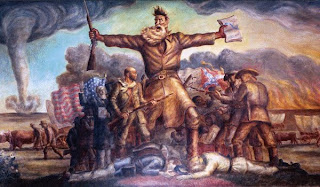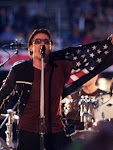
The 1920s have been romanticized for almost a century as "The Roaring Twenties," when America dried up but still partied, money flowed like water, and The Babe and Murderers' Row held the sporting public enthralled.
But that's only part of the story. Much like the Gilded Age, what was seen on the surface only hid a deeper conflict underneath: the promoters of modernism against the forces of traditionalism. From the speakeasies to the public schools, there were very few arenas in which a fundamental clash did not occur duirng the 1920s.
Your task: attempt to uncover the truth as opposed to the myth...
1.) "The Chicago Race Riots of 1919" - we will look at this together on Thurs., 3/8, in the context of post-WWI tensions growing out of unemployment caused by demobilization. The assignment we begin in class will be due on Fri., 3/9.
2.) "The Florida Terror: Race Relations in Florida after World War I" - this PDF file is on my website. WARNING: you will be disturbed by some of the things that you read about in this lesson. Yes, they all happened in your home state, and yes, it's all true. Be thankful that I did not include any pictures. For 5 points Extra Credit, look up Billie Holliday's immortal song "Strange Fruit" on http://www.pbs.org/independentlens/strangefruit/film.html and write a 100-word response to this song and its effect as a protest song. Both of these assignments (the "Florida Terror" Graphic Organizer & the "Strange Fruit" write-up) are due on Tues., 3/20.
3.) Monterey Institute, Unit 8, Ch. 19, Lesson 58 - Both assignments due on Wed., 3/21
A.) Complete one podcast sheet (front and back) for each section (there are 5), and;
B.) Complete the Unit 8 Discussion Question ("The 1920s was a decade of tremendous tension between forces of tradition and modernity. Analyze how the United States began to modernize and how many Americans clung to 'traditional' values."...use at least 3 specific examples, and at least 500 words in length). - this needs to be emailed to me to verify word count
4.) Ch. 31 & Ch. 32 Guidebooks - both on my website and both due on Thurs., 3/22.






